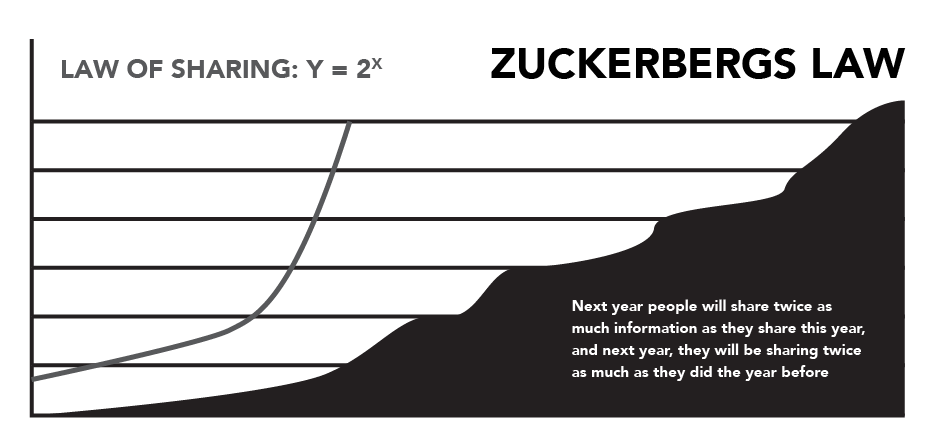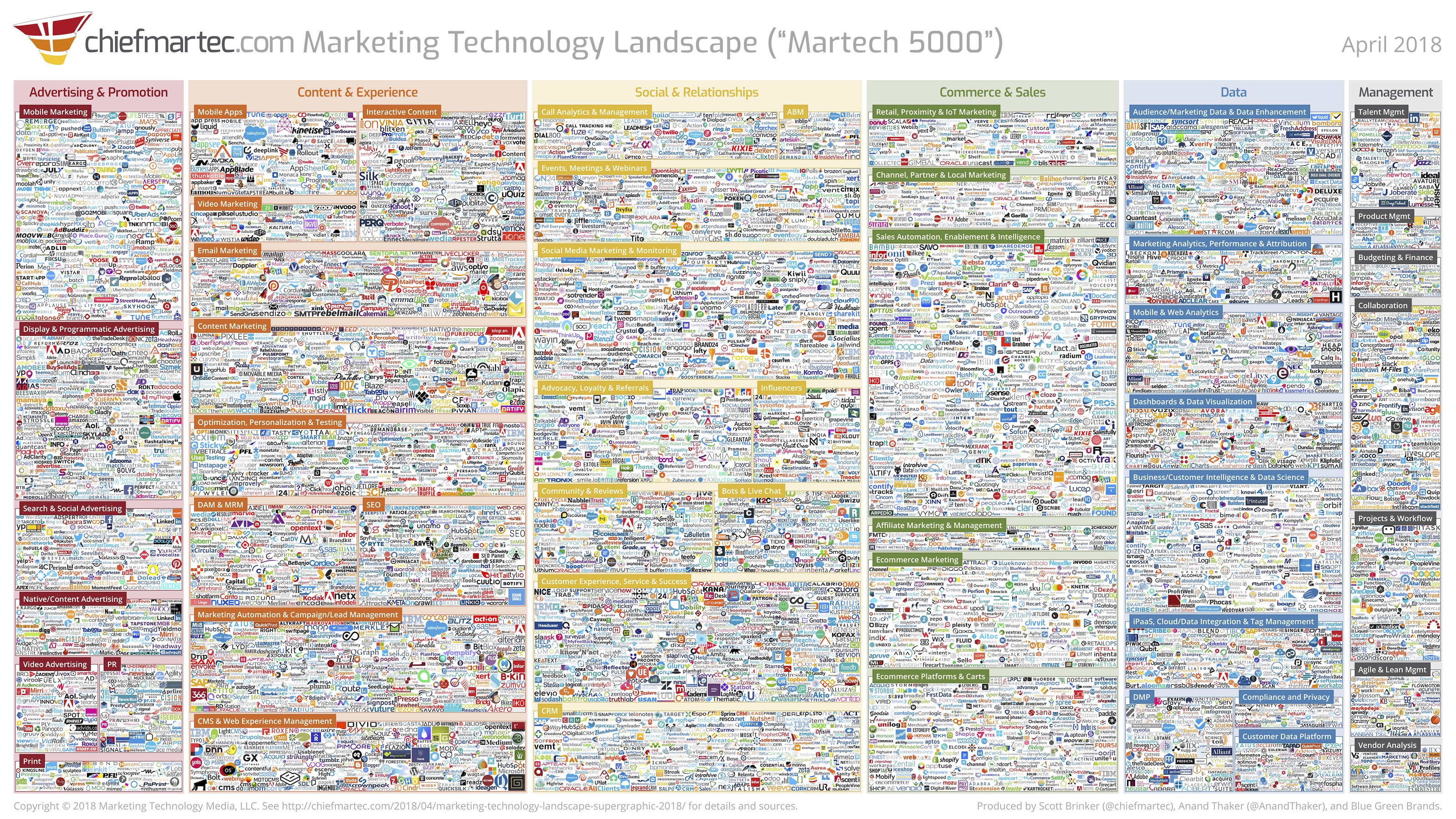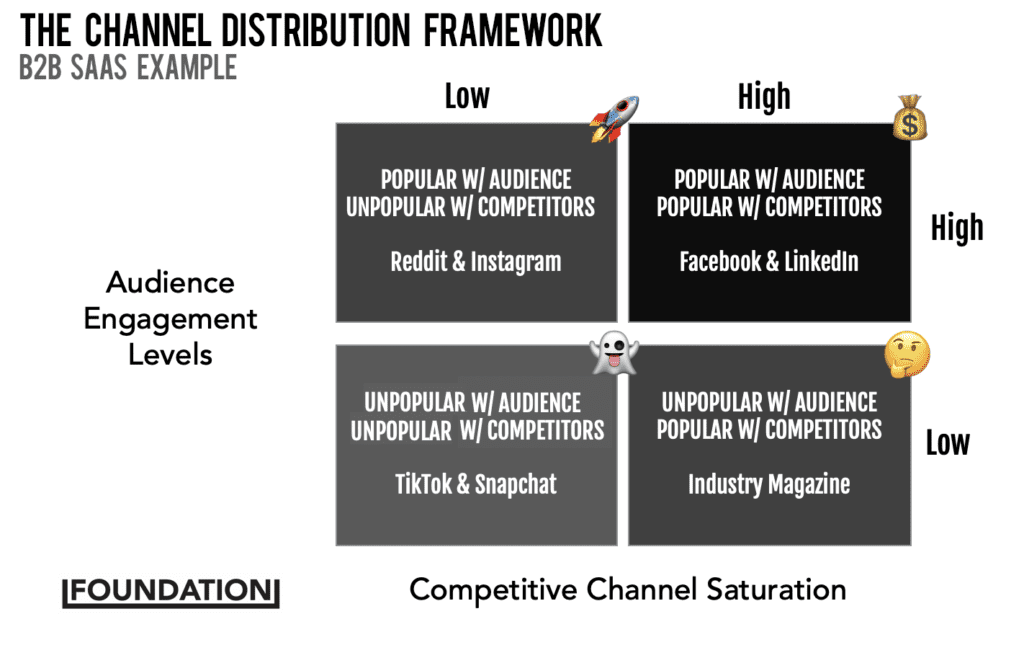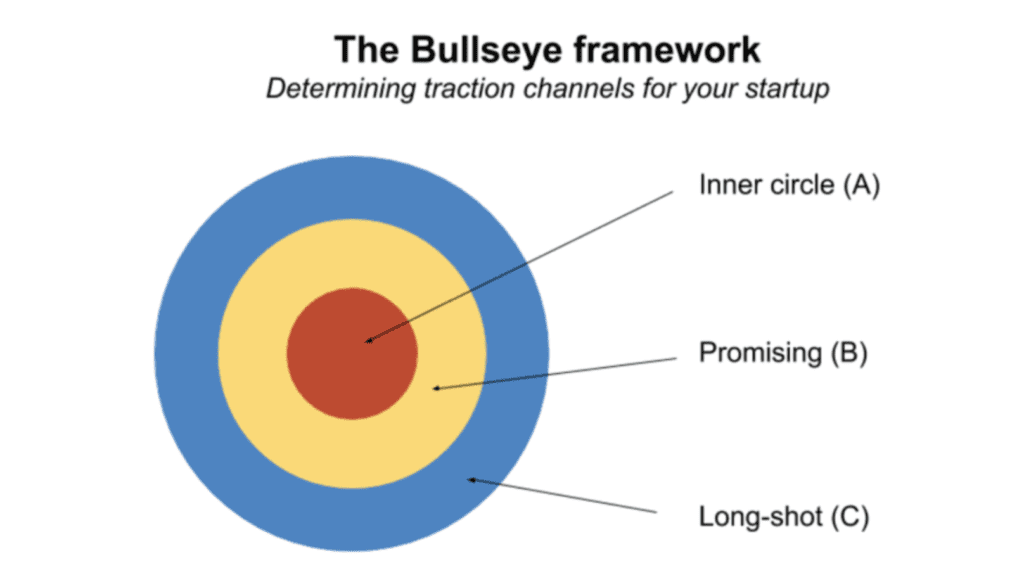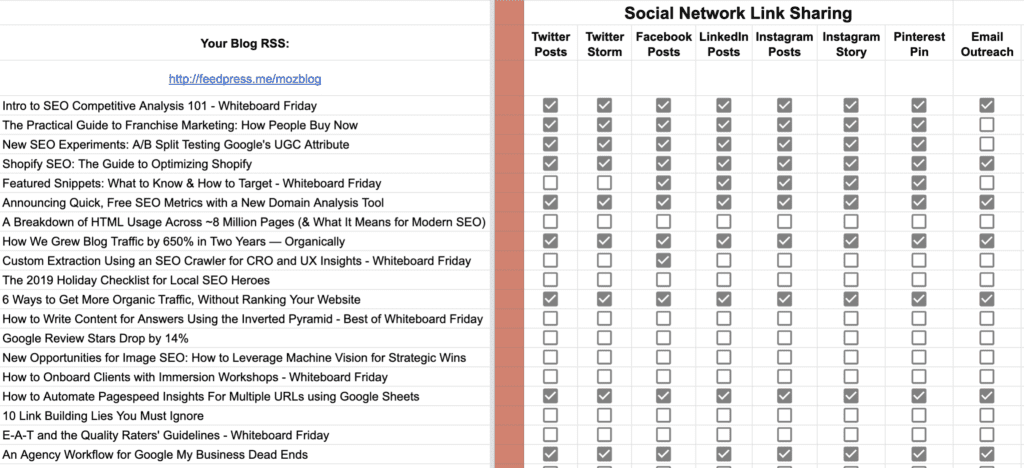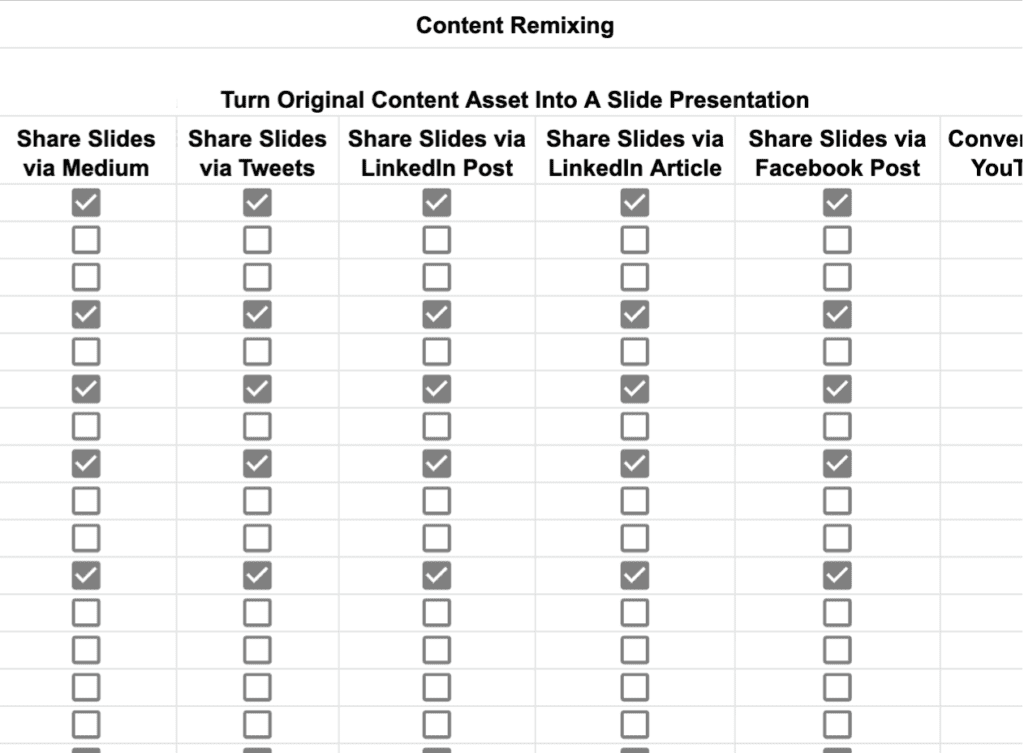Your team has written thousands of words. They’ve injected keywords in it, sourced great imagery and even included a handful of expert quotes. The asset is valuable, compelling and, dare I say it, it’s what some would call 10x content.
You press publish… The internal Slack channel goes wild.
Everyone is applauding (with the emoji). GIFs are flying… But the traffic…
Is meh…
No one’s reading it. Or at least the number of people reading it is so insignificant that you’re left scratching your head and asking: Why do we invest in content marketing?
This is the reality many organizations live in.
Especially high growth companies that have heard about the value of content marketing but haven’t seen the value from it. It’s the reality that many writers, marketing teams and even CEOs face when they look closely at their content marketing engine. There’s nothing more painful than being met with crickets.
I’ve seen it time and time again. But there is good news:
Over the last few years, the team and I have been working with brands to solve this exact problem. We’ve studied it, we’ve solved it, we’ve worked on it and, if I wasn’t always looking for new ways to improve, I guess you could say we’ve borderline perfected it. And that’s why we’re sharing a complete distribution framework for content marketing teams that want to get more out of every asset they publish.
But before we dive into that — Let’s start with the basics:
Why do we distribute?
More noise than ever before.
Back in 2011, Mark Zuckerberg introduced a small audience to the “Law of Sharing” which is the idea that every year the amount of sharing done online doubles:
I think it’s fair to say that almost everyone is sharing a whole lot more online today than they did back in 2011. While the growth may not have doubled each year, the frequency of online publishing is at an all time high every single year. As a result, brands are up against more noise than ever before, when they press publish on a new asset or share a post on social.
More channels than ever before
The increasing number of social networks have also made it more important for brands to invest in distribution. Not just because the channels exist… But because these channels are capturing more and more of your audience’s time. The channels they were once spending time on have been diluted due to other channels launching and capturing their attention.
More competition than ever before
This was once described as the MarTech 5000 — a graphic that showed the 5000 Martech companies trying to solve a variety of different problems:
It’s now the Martech 7,040.
Yes… That’s right. There are more than 7,000 marketing technology companies trying to compete for the attention of a very similar audience. But this rise of competition isn’t just happening in the world of MarTech. It’s happening in practically every growing industry.
It’s easier than ever to start a company. It’s easier than ever to promote a company. And as a result, it’s easier than ever to blend in amongst the competition. This is why it’s so important to ensure that you’re not just pressing publish and playing the waiting game. This is why it’s important to understand the fundamentals of content distribution.
What makes good distribution?
It’s a common belief that the best product always wins
This is a myth
The timing of technology platform shifts & acing the most plentiful distribution channels usually determines who wins
But we keep building in hopes of creating the “best” product—because this is the pursuit
— Norgard (@BrianNorgard) December 26, 2018
Good distribution is when you can consistently drive results from a channel. It might be expensive, it might even have lots of competition, but you know it’s going to work. Great distribution is when you can consistently drive results from a channel that your competition has overlooked or cannot access.
These two types of distribution make up the top two quadrants of Foundation’s Distribution Matrix:
There are four distribution categories: Rocket channels, money channels, ghost channels and questionable channels. Here’s how the Foundation team describes each:
🚀Rocket Channels: Channels that have the potential to take off and unlock unprecedented growth. These are channels where your audience is spending time but your competition has written it off as too risky or a channel that has significant barriers to entry to unlock for your organization. These barriers could be regulatory or directly related to access in the form of partners or marketplaces.
💰Money Channels: Channels where you’re already seeing many of your competitors generate results and you’re able to consistently do the same. These channels are great for consistent results but some channels within this quadrant, may force you to pay to play seeing that they’ve unlocked product-market fit.
👻Ghost Channels: Channels that don’t provide access to your ideal audience and are not currently being used by your competition. These channels can open opportunities for you but are difficult to scale until they broaden their scope of reach amongst your audience. Gaining insight into how to use them early can be an advantage, but comes with the risk of never being readily adopted by your competition.
🤔Questionable Channels: Channels that are saturated with competition, but have a low engagement rate with your target audience. These channels are typically invested in long after their value has evaporated due to switching costs, outdated practices & uninformed decision making.
Out of all these channels the most effective is the Rocket channels. 🚀
These are the channels that give content the ability to skyrocket, in traction, and brands the ability to increase market share. It’s Airbnb’s act of posting on Craigslist to spread their listings, it’s the consistent guest blogging that Buffer’s founders did to gain traction around their story and it’s the development of a preferred agency program by Hubspot that created hundreds of new sales reps & marketers without the overhead.
Let me share with you one of the first examples of a rocket distribution channel…
The power of distribution through Rocket channels 🚀
Zero competition. Massive audience opportunity.
Reducing the likelihood of competition and increasing the likelihood of acquisition is the primary goal for distribution. One of my favorite examples of distribution optimization is when Bill Gates and Paul Allen, of Microsoft, signed a nonexclusive deal with IBM to place MS-DOS on every new IBM PC. It’s an example of a perfect deal that locks out competition, opens up new channels of distribution and reaches your audience.
It was 1980 and IBM was already losing ground to competitors creating personal computers. Microsoft had launched 3 years earlier and needed to find a way to get their software in front of more developers and more people. IBM issued a request for proposals that required an NDA from software companies to discuss what they called “Project Chess,” where IBM would be outsourcing software development to enable the operations for their systems.
Many other software providers (Microsoft’s competition) got caught up in the idea of signing an NDA and wasted time debating the legal mumbo-jumbo which opened the door for Microsoft to sign the NDA and make it a no-brainer for IBM to sign the deal. The deal was perfect for Microsoft, because it was a non-exclusive deal that offered them the chance to sell their software to other PC manufacturers as well as IBM. On Nov. 6, 1980, the contract that would change the future of computing was signed: IBM paid Microsoft $430,000 to install MS-DOS on millions of their computers that would be promoted & advertised to the masses.
In the months that followed Microsoft’s deal with IBM, other PC manufacturers, especially those from Japan, approached Gates about using MS-DOS and, thanks to the terms of the deal, Microsoft was free to sublicense it to them. Within a year, Microsoft licensed MS-DOS to over 70 other computer manufacturers. This deal gave Microsoft distribution into the PCs of millions and opened the door to be the operating system of choice for developers and new products.
How to identify quality distribution channels
There are tons of different distribution channels. In this video, I break down more than 20 different ways that brands can distribute their content online today:
Most brands allow their competition to guide their decisions around what distribution channels will work best for their content. Most brands copy and paste the efforts being used by competition, instead of paving their own path. There are certainly benefits in reverse engineering efforts done by others to create your own path, but don’t let them set the entire playbook. If you’re going to compete, you’re going to have to find a distribution channel you can own.
As Reid Hoffman, Founder of LinkedIn said:
One of the first things that I really learned, which is one of the key things why social net failed, is, actually in fact, product distribution is more important than product, like, we want to create great products that people love, that gives them moments of magic, it’s part of why we do what we do…. But if you are not building the strategy of product distribution, into what you are doing, then you are relying entirely on a form of: running into a field with a large metal pole hoping that lightning strike, and that’s not usually a winning strategy.
The same product theory applies to content.
There are a lot of things to consider when it comes to identifying the ideal distribution channels. Here are a few of the most important considerations that you should take into account:
The quality of channel engagement: We all know that different types of interactions have different levels of value. Someone who presses ‘like’ on an Instagram post isn’t the same as someone who clicks ‘buy now’ from a guest post.
The level of competition: As highlighted in the Distribution Matrix, channels that are saturated with competition aren’t always as effective as those without competition. If you’re an early adopter of a channel and can get first-movers advantage; that presents a massive opportunity for you to win.
The potential audience reach: Some channels simply will have more opportunities to drive results because of their audience size. If you’re going into a channel with significant reach, it can quickly make a specific channel a key lever for growth.
The barriers to utilize the channel: The more barriers for your competition to capitalize on a channel, after you have locked it in – the better. An example of this is the MS-DOS situation highlighted above, but also many partner agreements, affiliate deals, co-branded webinars and integration deals can offer this edge.
The average cost per result: The brands who are focused on increasing their revenue and decreasing their expenses should keep this in mind. A channel that has high competition may come with a higher price tag to drive results. A channel with a low audience but high level of engagement may have a low price tag. It’s important that you understand your acquisition costs per distribution channel and optimize based on what the numbers feel will work best.
Once you understand the factors that go into a great distribution channel, it’s not time to start spreading stories like wildfire. No… It’s time to better understand exactly what channels your audience is spending time on and get to know the way in which they’re engaging in these channels. The goal here is to understand the channels they’re using to make decisions, the channels they used to guide decisions to buy from competitors and the channels they’re starting to spend more time on, but the competition hasn’t really caught onto that yet.
You can find answers to these questions through social data, search data, third party research and good old fashioned conversations. If you’re taking the conversation approach, it can often be helpful to engage a third party (like Foundation) to ensure there’s no bias creeping into the questions you ask and responses you give.
Once you understand the factors that go into a channel & know where your audience is spending time – it’s time to start creating a list of channels you could capitalize on. If you’re just getting started with marketing one of the best frameworks I’ve seen is The Bullseye Framework by Gabriel Weinberg & Justin Mares. It’s the idea of listing your top 9 distribution channels, taking the top 3 from that list and placing them in the middle of the bullseye (see the graphic below) and then placing the remaining six on the outside of the ring:
The distribution channels that live in the middle (A) are the bread and butter that you focus on. The channels just outside of that (B) are where you spend some time, but not as much as the inner circle. And the most outward circle (C) contains channels that seem like a long-shot for you to actually be able to act on or see results from.
When it comes to content distribution, the same theory applies but you can incorporate more channels throughout the entire exercise. The reason why more channels work in this situation is because we’re not talking about high level strategy in the sense of “affiliate marketing strategies” or “PR” to drive results — we’re simply looking for strategies that will help individual content assets spread more effectively. Some distribution efforts will take 10 minutes to act on and others may take a few hours. This is why you can invest in more distribution channels for your content.
Creating your content distribution engine
3 R’s Of Distribution: Reshare, Repost or Remix
I’m a huge fan of simple processes:
- Build. Ship. Learn. Decide.
- Research. Rethink. Remix.
- Create. Discover. Distribute.
And now… Reshare. Repost. Remix.
The idea behind this is simple: Once you press publish on a piece of content there are three things you can do with it to drive optimal results: reshare it, repost it or remix it. Each of these techniques should make up a portion of your distribution engine for every asset you create.
Here’s a summary of what goes into each technique:
Reshare: You press publish and now it’s time to share. This is the act of sharing the link to the piece of content you developed on social channels & other owned channels that reach your audience. It could be sharing the link on Twitter, Facebook, LinkedIn or even including a link to the asset inside of a question on Quora — it’s the simple act of sharing the URL.
Repost: You press publish on an asset and it lives on either on your site or somewhere else. Instead of allowing that asset to live only in one place – the act of reposting is taking the asset in its entirety and reposting it on other channels. It could be reposting as a LinkedIn Article, a Medium article, a guest blog post or as a Quora Article — it’s the act of reposting elsewhere.
Remix: You press publish on an asset, you share it & you even repost it on a handful of other channels. The remix is when you take the asset you originally created and start turning it into assets that can live in new formats, new channels and with new content. It could be turning a blog post into a YouTube video, it could be turning a YouTube video into a podcast, it could be turning a podcast into an Infographic — it’s the act of remixing old content into something new.
Our distribution engine checklist / framework
The spreadsheet above is an example of a Distribution Engine applied to a blog and the posts published on it. I’m using the Moz blog as an example here but the titles & topics of the blog content matter much less than what you do with them once published.
The content is pulled in from the RSS feed on the left and the distribution techniques (Reshare, Repost & Remix) along with their various tactics are on the right. The list above shows you some of the ways that an asset should be shared when it goes live. As the distribution effort is implemented, the owner of content distribution for this asset checks off the box and continues on their path of distribution. The first section of the sheet, that you see above, is dedicated solely to efforts found in the Resharing bucket.
As you scroll right, you will see Reposting efforts:
Once an asset is remixed into something new, it gets added right back to the distribution engine and will be passed through the resharing & reposting process just like the original format:
Your content distribution engine should be easy to apply to every asset you publish. The efforts implemented after pressing publish should happen in sequence every time and offer no surprises (unless it’s a viral hit) around what is being done to promote content assets being created week in and week out. If you’re interested in getting access to the distribution framework highlighted above, it’s a part of our DREAM (Distribution. Rules. Everything. Around. Me.) Bundle which includes a webinar, this framework, a distribution checklist and much more.
Wrapping this up
For years, marketers have preached about how content is king and the world has listened. Unfortunately, a lot of organizations have invested in creating content but have overlooked the efforts required to get that content in front of the right people.
This is where distribution comes in.
If you’re struggling with the second part of distribution be sure to check out the framework above and also take a look at my recent webinar on the topic. It’s a full hour of education on content distribution and how organizations can do it better along with some great resources to make your content engine run smoother. It’s a small investment that can help your content go from consistently generating crickets to content that is consistently generating results. Get it now and let me know what you think.

